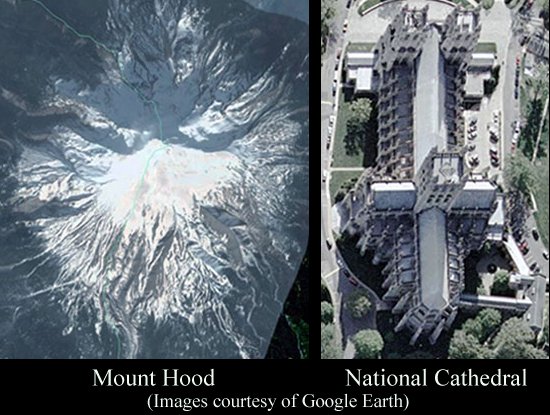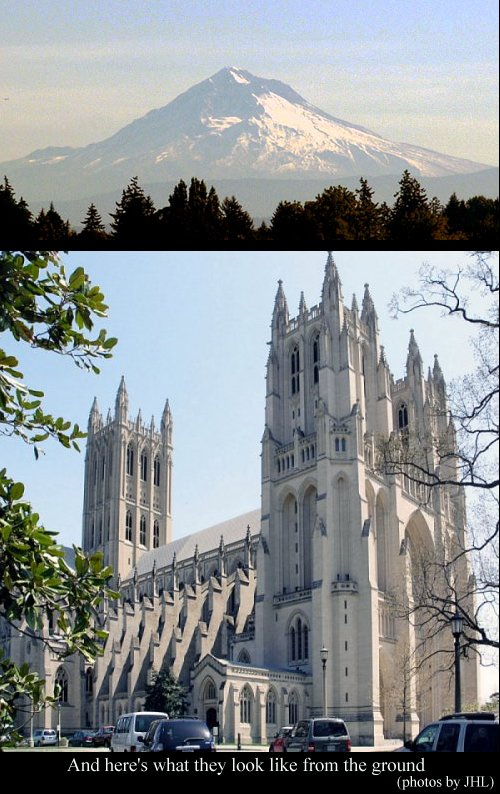A New View
Today, a new look -- at seeing things. The University of Houston's College of Engineering presents this series about the machines that make our civilization run, and the people whose ingenuity created them.
I've recently been hypnotized by the software: Google Earth. Like me, you've probably gone online to look at their mix of aerial and satellite photos of Earth's surface. As of 2007, the resolution on land varies from around fifty feet at worst, to six inches at best. We can easily find Mt. Hood. Finding our house is a little harder but, once there, we can see its architectural features.
In Cambridge, Massachusetts, We can make out people in the main quadrangle of MIT. We can identify makes of cars in Las Vegas parking lots. Push a few buttons and we get full map information -- roads and highways, towns, cities, geographical features. Those photos become conventional maps.
Most of the images are about two or three years old; and, if we live out in the country our house will be pretty blurry. But, like other Internet information benefits, this one mutates before our very eyes. It will, no doubt, be radically improved by the time this program reaches reruns.
Now the catch: When we look at something familiar from above, the image is a surprise: I spent half an hour trying to find National Cathedral (where I once sang). I had to search the Columbia River Gorge even longer to find Rooster Rock (which I once climbed). We have to retune our eyes to use this fine resource. Mount Hood is easy to find since it's very big; but it looks nothing like the mountain I've seen so many times from the ground.
All this can be a little upsetting. It's like trying to recognize an old friend when he does something evil. Or an enemy who does something good. It's like suddenly seeing ourselves in a wrong camera angle or in one of those three-way mirrors in a clothing store. It's both distressing and exciting when those overhead photos from Google Earth upend our knowledge of familiar things.
Of course, that's an old story. Who doesn't have trouble first believing that a rubber band will shrink when it's heated, or that compression will melt ice while it freezes alcohol? Look at how hard it is for many people to digest the well-proven fact that species evolve into new species. Look at the lengths we go to when we protect ourselves from adapting to new knowledge.
New generations eventually digest new ways of seeing. When I was a child, a hurricane was only invisible wind. Now television has acculturated us to a new kind of pictorial semantics. Now a hurricane is a large white spiral, seen from above.
To learn is to be surprised -- to make sense of what we see through, say, a microscope, ultrasound, or through another person's eyes. It's listening with our eyes and our minds as well as with our ears. The narrator in the musical Fantasticks captured it all wonderfully well, when he said of a scene with two young lovers:
... try to see it. not with your eyes, for they are wise, but see it with your ears: the cool green breathing of the leaves. And hear it with the inside of your hand: the soundless sound of shadows flicking light.
I'm John Lienhard, at the University of Houston, where we're interested in the way inventive minds work.
(Theme music)
To read more about Google Earth, see: https://en.wikipedia.org/wiki/Google_Earth

